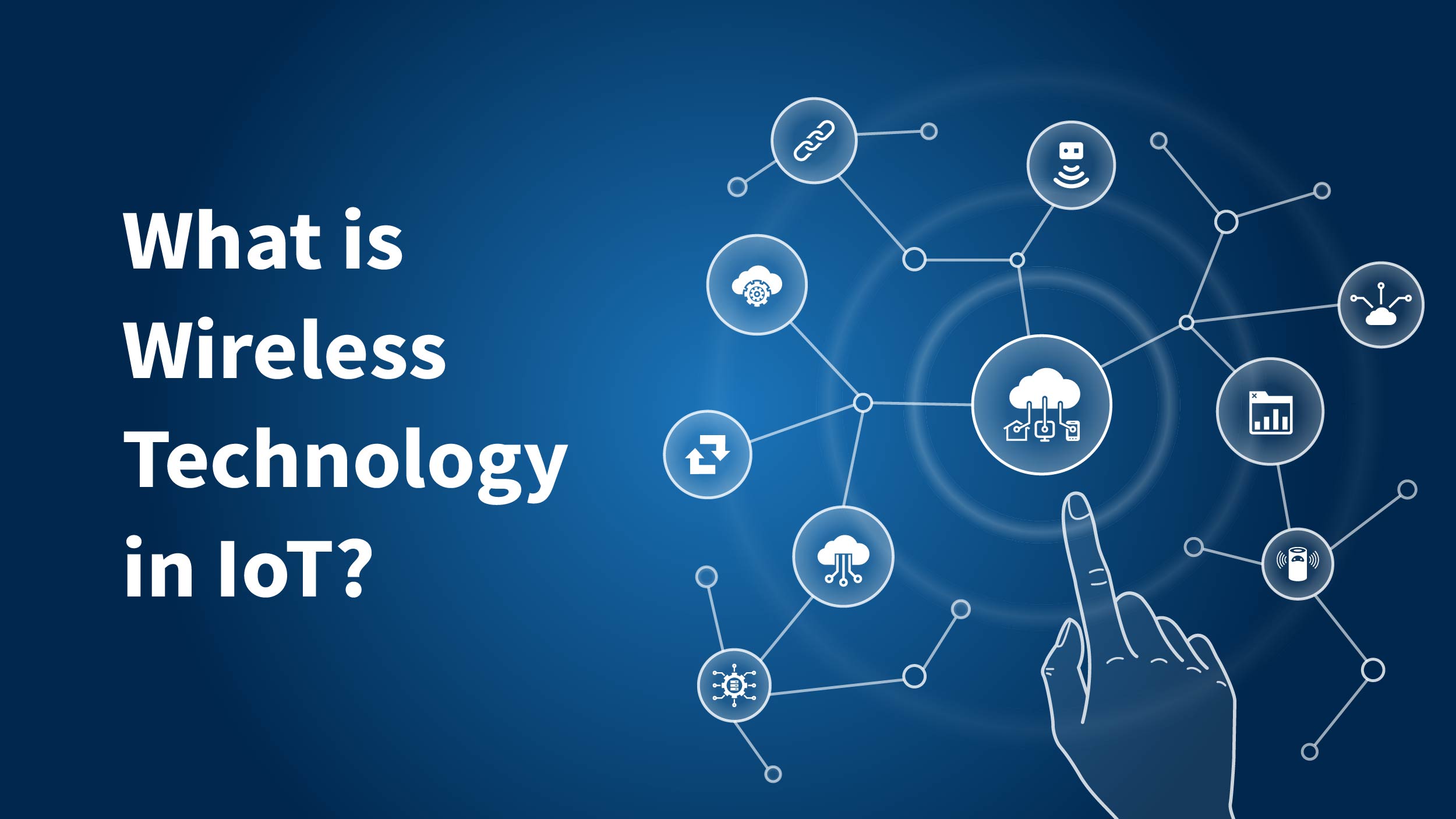Ever wondered how your smart devices talk to each other without a tangle of wires? Well, that’s all thanks to the marvel of wireless IoT technology!
In the fast-evolving landscape of the Internet of Things (IoT), wireless technology stands as a cornerstone of connectivity. It is the vital thread that weaves together a myriad of smart devices, from household gadgets to industrial sensors. This technology not only revolutionizes the way we interact with our environments but also fuels the development of smart cities, healthcare solutions, and much more.
Let’s take a closer look into the details of wireless IoT technology, exploring its various types and more in this blog.
What is Wireless Technology in IoT?
 Wireless IoT technology refers to the means by which Internet of Things devices communicate without the need for physical, wired connections. It allows these devices to exchange data and information through wireless protocols and networks, such as Wi-Fi, Bluetooth, Zigbee, LoRa, and cellular networks. This enables seamless and flexible connectivity between IoT devices, making it possible for them to transmit and receive data for various applications, from smart homes and wearables to industrial automation and smart cities.
Wireless IoT technology refers to the means by which Internet of Things devices communicate without the need for physical, wired connections. It allows these devices to exchange data and information through wireless protocols and networks, such as Wi-Fi, Bluetooth, Zigbee, LoRa, and cellular networks. This enables seamless and flexible connectivity between IoT devices, making it possible for them to transmit and receive data for various applications, from smart homes and wearables to industrial automation and smart cities.
What are the Most Common Types of Wireless IoT Technologies?
 While all IoT devices transmit and receive data wirelessly, they do so in different ways. There are various connectivity options, and some are better suited to specific applications than others.
While all IoT devices transmit and receive data wirelessly, they do so in different ways. There are various connectivity options, and some are better suited to specific applications than others.
When deciding which option to use for a given application, factors such as battery life, coverage range, power requirements, and bitrate must all be considered. Let’s take a look at some of the most common types of wireless IoT technologies.
Also Read: Digital Content Management: The Key To Online Success!
● Radiofrequency
RF communication is all about sending data over radio frequencies. Wi-Fi, Zigbee, SigFox, and LoRa are all technologies that communicate at different frequencies and cover a wide range of distances. Wi-Fi is used for both short- and mid-range network communication, making it suitable for both smart homes and industrial applications. LoRaWAN, on the other hand, is best suited for long-distance communication needs, such as in Smart Cities.
● LoRaWAN
LoRaWAN is a powerful and rapidly evolving technology. It’s similar to Bluetooth, but it has a longer range for small data packets while consuming less power. LoRaWAN manages all connected devices’ communication frequencies, power, and data rates. As a result, LoRaWAN sensors communicate with a cellular gateway in order to send data to the cloud. Backhaul transport is required, and partners like Zipit can provide the necessary cellular support.
Because LoRaWAN has a long range, sensors can be widely distributed over a large area. Because these sensors are simple and designed for small data packets that are transmitted infrequently, they are ideal for irrigation management, leak detection, logistics and transportation management, and asset or equipment tracking. Keep a close eye on LoRaWAN as it evolves.
● Wi-Fi
The Institute of Electrical and Electronics Engineers (IEEE) designated this as 802.11 as the most widely used communication standard. It operates in the 2.4-5GHz frequency range. Wi-Fi will play an even larger role in wireless transmission as the 5G network is deployed. WiFi, another well-known IoT wireless technology, has played a critical role in providing high-throughput data transfer in homes and enterprises.
Wi-Fi can be very effective in the right circumstances, but it has significant limitations in terms of scalability, coverage, and power consumption. IoT devices are discouraged from being added to the same primary Wi-Fi networks as traditional employee computers or phones due to newer enterprise security practices.
● Cellular
While cellular networks are unsuitable for the majority of IoT applications powered by battery-powered sensor networks, they are ideal for specific use cases such as connected cars or fleet management in transportation and logistics. In-car entertainment, traffic routing, advanced driver assistance systems (ADAS), fleet telematics, and tracking services, for example, can all rely on ubiquitous and high bandwidth cellular connectivity.
Cellular 5G with high-speed mobility and ultra-low latency is positioned to be the future of autonomous vehicles and augmented reality. In the future, 5G is expected to enable real-time video surveillance for public safety, real-time mobile delivery of medical data sets for connected health, and a number of time-critical industrial automation applications.
● Bluetooth and BLE
BLE-enabled devices are typically used in conjunction with electronic devices, most notably smartphones, which act as a hub for data transfer to the cloud. BLE is now widely integrated into fitness and medical wearables, as well as Smart Home devices, allowing data to be easily communicated to and visualized on smartphones.
Approximately 30 billion IoT devices were estimated to be in use in 2020.
Final Thoughts
Wireless IoT technology is the invisible backbone of our connected world, making our lives smarter, safer, and more convenient. From our homes to industries, it’s shaping the way we interact with our environment. The seamless interplay of wireless protocols has given rise to a new era of innovation, shaping industries, cities, and the way we live our lives.
From smart homes that respond to our needs to industrial processes optimized for efficiency, the impact of Wireless IoT Technology reverberates across all facets of modern existence. With continuous advancements and an ever-expanding network of connected devices, the future promises even greater strides in the realm of IoT.


Comments are closed.